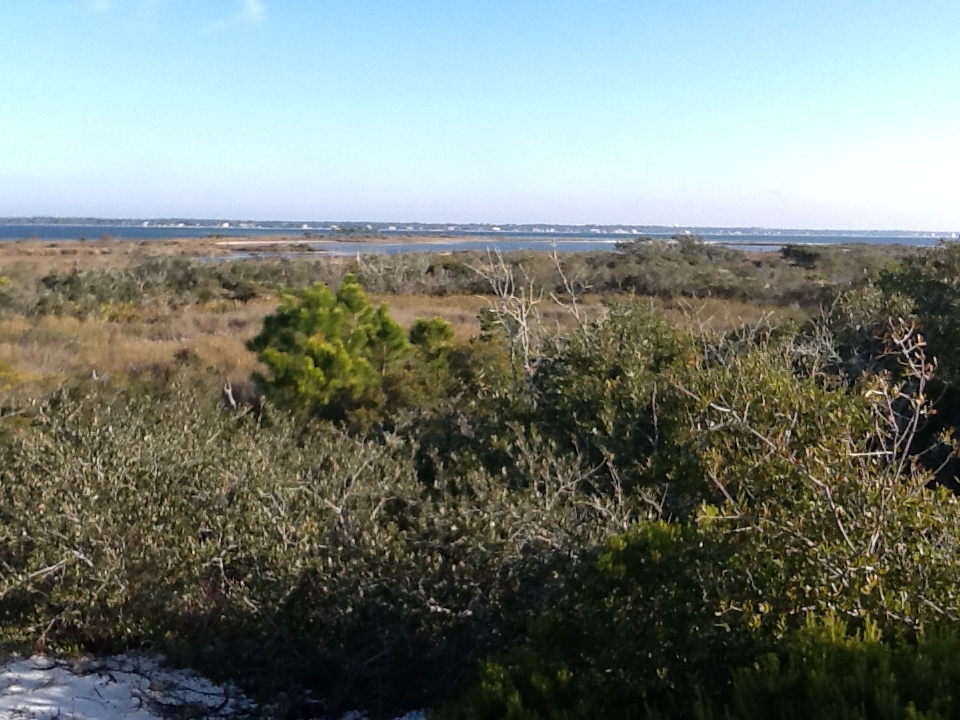
by Rick O'Connor | Mar 24, 2022
When exploring local coastal environments, the salt marsh is one not frequently visited by residents. When first seen, the large field of grass appears inviting. But when you reach it appears impenetrable, full of bugs and snakes, and there must be an easier way around.
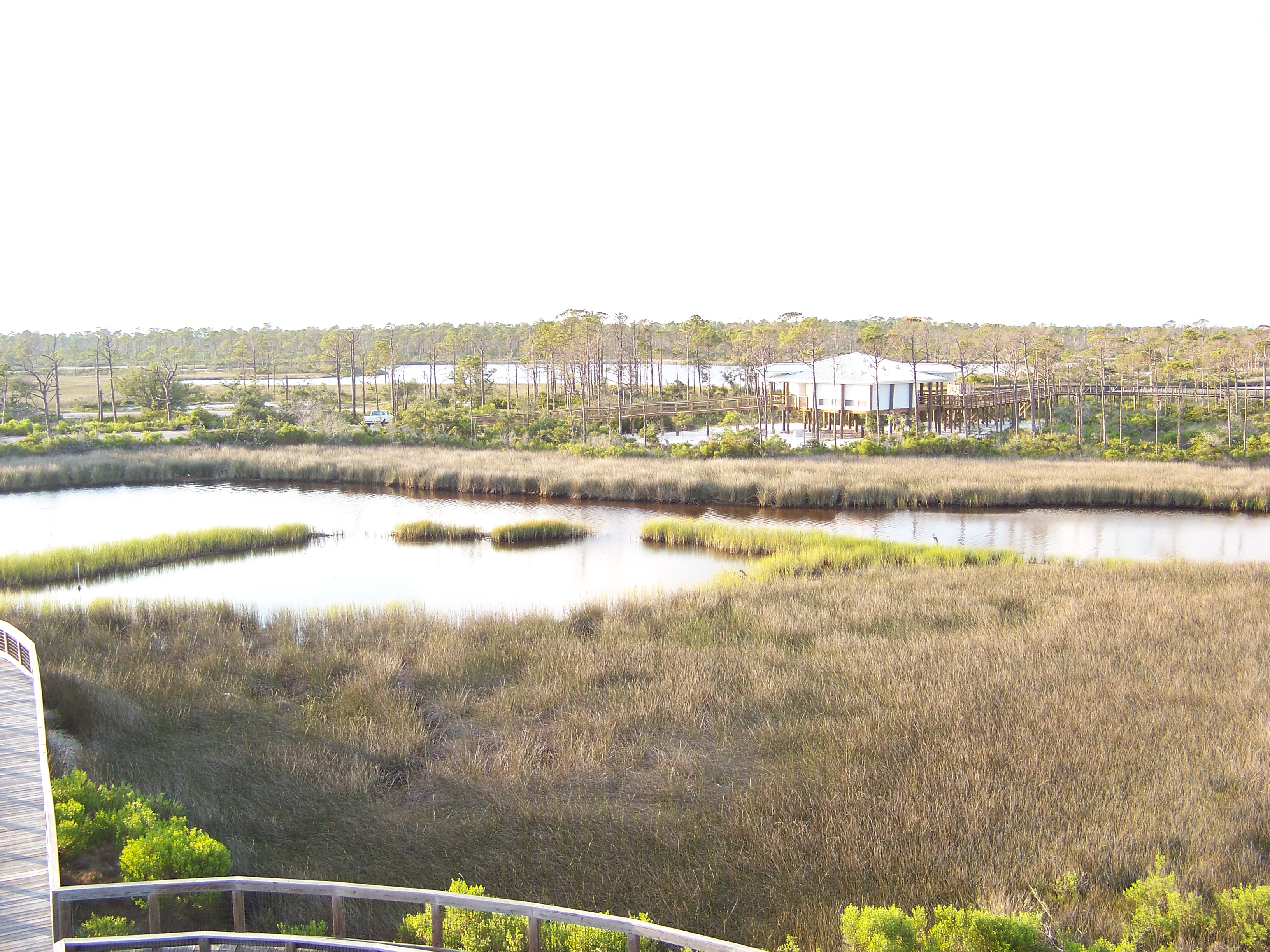
The Salt Marsh – the land of the wet and Muddy
Photo: Molly O’Connor
There are three ways to access a salt marsh. One, to just begin walking into the field of grass, pushing your way through like a boat on the ocean. Second, using a trail cut but someone else, that meanders its way to the high ground or open water. And third, from the open water following a creek. This can be done on foot or by a paddle craft.
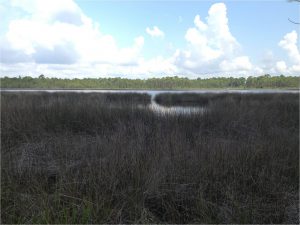
Entering the salt marsh can be tricky.
Photo: Rick O’Connor
If entering by foot into the field of grass, the explorer is first met with a tall grass with a pointed end – black needlerush. This rather stiff, thin, cylinder-shaped grass has a good name, the pointed end is sharp and hurts as you begin to move it out of the way with your forearms. When in college I was told “you might want to wear jeans”. I did not see wearing jeans in the summer heat as a good idea so, chose not to, but understood quickly why they recommended it. Honestly, I am not sure it would have helped anyway. Needlerush pokes your arms, legs, and care must be taken and avoid bending over to pick something up, else you will get a poke in the face or eye.
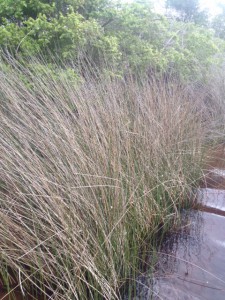
Black Needlerush is one of the two dominant plants of our salt marshes. Photo: Rick O’Connor
After quickly meeting black needlerush you meet the mud. They do not call it the land of the wet and muddy for nothing. They mud is like pudding and some sections feel like there is no solid ground. This mud is a slate gray color, smells like rotten eggs, and you can sink into it up to your knees in places. Shoe selection in a place like this is important. Many an explorer has placed their shoe covered foot into the mud only to bring up a shoeless foot the next step. Shoes that can tied or synched to the foot are best. They need a good thick bottom to protect the foot from shells, like oysters. I will tell you “crocs” are not what you want.
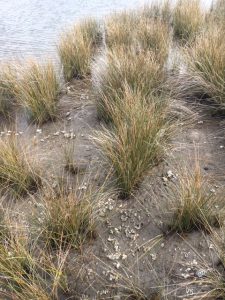
The sediment in a marsh is not always as solid as it looks.
Photo: Rick O’Connor
The rotten egg smell is the gas hydrogen sulfide, produced by bacteria breaking down organic material trapped within the marsh. And much becomes trapped here. By definition a marsh is a wetland that is dominated by grasses rather than trees. Being a wetland, it is low in elevation and holds water either from rainwater run-off or from the incoming tide. As the water recedes, leaf litter, animal carcasses, and other debris become trapped in the marsh. In fact, the ability of the marsh to hold this decaying layer of mud plays an important role in keeping the open water clear.
As you labor your way across the marsh, pulling each footstep through the mud while moving the sharp grass, you may see signs of life. Most animals have trouble walking through the grass and mud as well and choose another route. But the density and biomass of the open marsh is impressive. Trying to count the blades of grass would be like trying to count the stars in the sky. It is a very biologically productive place. One creature you may encounter is the bird known as the clapper rail. This brownish bird blends in well in the sea of grass and often builds their nest here. When you come upon them, they will let out a loud squawking sound that will honestly terrify you at first. Sometimes they fly, sometimes they move to a new location, sometimes they hold their position and continue to try and scare you away.
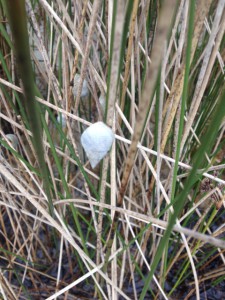
The marsh periwinkle is one of the more common mollusk found in our salt marsh. Photo: Rick O’Connor
Another common creature seen is the marsh periwinkle. This small white snail is often seen on the blades of needlerush. As the tides rises, so does the periwinkle, crawling up the grass to avoid predators like the blue crab and diamondback terrapin. At low tide they are on the surface of the organic mud feeding on bits of decaying material. Again, caution if you are going to bend over to look for them. You may get a needlerush in the eye!
There are times as you are crossing you will come to an open area with little or no grass. These are known as salt pans and are areas with lower elevation that the surrounding marsh. Saltwater lies here during high tide and low. As the pool of water evaporates the salinity of the remaining water increases and becomes too salty for most plants to grow. It becomes a “dead zone” within the marsh. There are a few salt tolerant plants that do grow here. You may see the tracks of other creatures exploring, like raccoons, but otherwise it is a break for you from the constant shoving of needlerush and you step in there.
Occasionally you will cross the opposite in elevation. A high ridge of quartz sand where small shrubs like salt bush or even a small oak can be found. These little oasis’s can be places where other travelers of the marsh will rest. Fiddler crabs, cactus, and maybe even a basking snake could be found here.
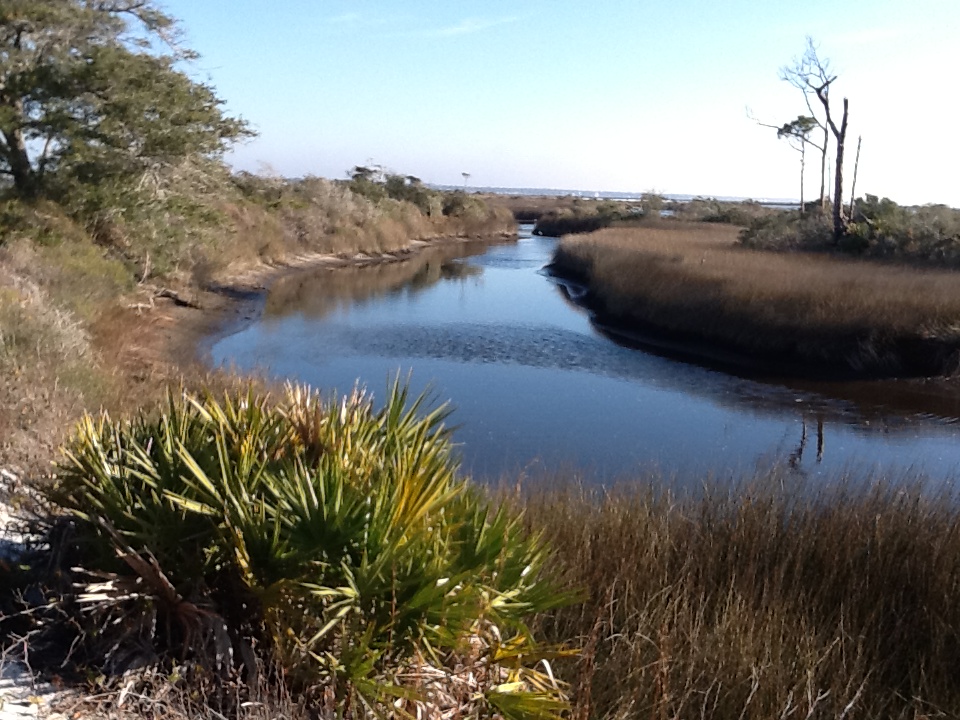
A finger of a salt marsh on Santa Rosa Island. The water here is saline, particularly during high tide. Photo: Rick O’Connor
There are times when you will cross a creek. These creeks meander their way through the marsh and to the open water. Many travelers, for obvious reasons, choose to follow these routes. Some creeks are shallow and full of mud where you may sink above your knee. Others are a bit deeper and have more solid bottoms of sand. Walking through the water can give some relief from the needlerush. Here you will see several species of fish. Most are killifish or mullet, but as you get closer to the open water you might find redfish or flounder. It is much easier to see the periwinkles here. You will also notice the ribbed mussels anchored near the base of the needlerush. There are oyster clumps scattered here and there and huge colonies of fiddler crabs. The creeks are good hunting grounds for the stilted legged birds such as the great blue heron and American egret. Clapper rails often nest along the creek edges and there is a lot of sign of raccoons and sometimes otters.

The “snorkel” is called a siphon and is used by the snail to draw water into the mantle cavity. Here it can extract oxygen and detect the scent of prey.
Photo: Franklin County Extension
The crown conch is a frequent visitor to the creeks. This predatory snail moves slowly across the sand and mud seeking other mollusks to feed on. Often you will find their shells not inhabited by them but rather the striped hermit crab, a scavenger in this world.
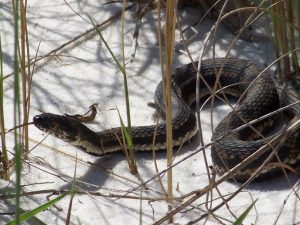
The nonvenomous Gulf Salt marsh Snake.
Photo: Molly O’Connor
Many fear the marsh due to its reptile community. Over the years of leading hikes here I have heard “are there any snakes here?”. There is only one resident of the salt marsh – the Gulf salt marsh snake. This is a nonvenomous member of the watersnake group known as Neroidia and are more nocturnal in habit. That said, the venomous cottonmouth has been seen here. They are most often seen on one of the high sandy banks, coiled and waiting for potential prey to swim by.
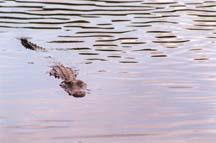
Alligator
Photo: Molly O’Connor
Alligators will venture into salt marshes, but I have only seen few in my years of exploring them in the Pensacola area. They tend to be afraid of people and want to avoid us. Once I saw one in a sandy area before I entered the marsh. It was pointing left with one foot off the ground and not moving – it was frozen in space. I had learned that animals tend to go through what I call the “3 Fs” when they detect a predator. Freeze – Flight – Fight. This one was at F1 – freeze. It thought I was a predator and just as well. If I tried to approach it, theoretically it would have moved to F2 – flight, and would have made a hasty escape. But I chose not to test that.
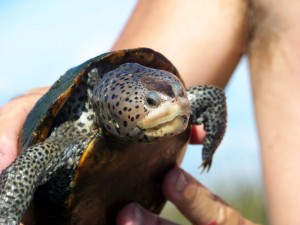
Mississippi Diamondback Terrapin (photo: Molly O’Connor)
There is a resident turtle here known as the diamondback terrapin. However, it is very elusive and difficult to find. It is the only resident brackish water turtle in North America. Though I have seen terrapins in the water, and more rarely on the beach, I do find evidence of their presence by tracks on the beach and nests that have been predated by raccoons. I did once see one basking on a log.
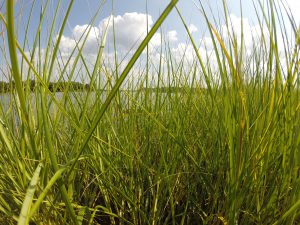
Smooth cordgrass
Photo: FDEP
If you follow the creek, you will eventually reach open water. Here the marsh converts from a sea of black needlerush to a zone of shorter, greener, more flexible smooth cordgrass. The cordgrass is home to many of the creatures we have mentioned. Killifish, crabs, and snails are abundant. The silt birds frequently this zone hunting for their prey, and you might find additional clams and snails. You might find more open water species as well, like gulls, sand pipers and plovers, and maybe a horseshoe crab.
Though the road is tough, the experience is unique and worth the trip. Many prefer to enter the marsh using a known trail or a paddle craft in the creek. There is a lot less needlerush to poke and mud to sink in doing it this way. However you visit, it is an amazing place. The land of the wet and muddy.
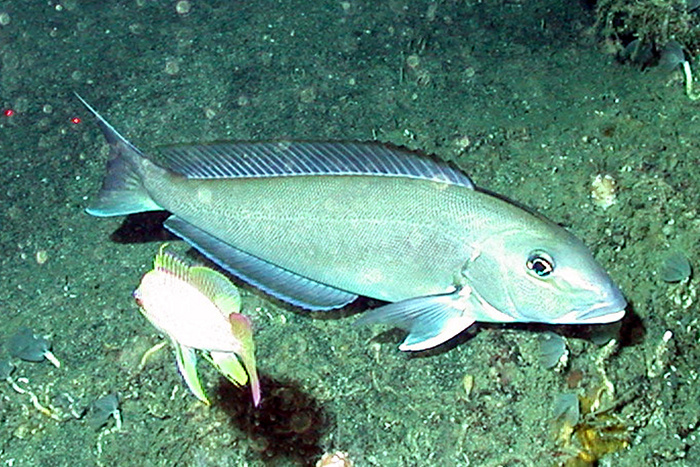
by Rick O'Connor | Mar 24, 2022
I am going to be honest and say that I know very little about this fish. I did not know they even existed until I attended college. Shortly afterwards, my father-in-law asked “hey, have you ever heard of a tilefish?” – to which I responded yes… He was having lunch at a restaurant in Apalachicola, and it was on the menu. My father-in-law was an avid fisherman and knew most of the edible species, but he had not heard of this one. The rumor was that it was pretty good, though my father-in-law chose not to eat it that day.

Tilefish
Photo: NOAA
I have never seen it on a menu, and only a few times in the local seafood markets, but according to Hoese and Moore1 by the late 1970s there was a small commercial fishery for this fish emerging in Louisiana, as was a small recreational fishery. In Florida, since 2000, there have been 15,435 commercial trips for this fish with an average of 321 each year. The value of this fishery over that time is $33,118,554 with an average of $689,969.90 each year. The average price for the fishermen was $2.62 per pound with the highest being $5.14/lb. on the east coast and that in 2022; the Gulf fishermen are getting $4.16/lb. right now.
The highest number of landings per county since 2000 was 340 in Palm Beach County in 2000. Only eight times has there been more than 200 landings in a single year over the last 22 years. Five of those were in Monroe County (Florida Keys) and three were again in Palm Beach County. The vast majority were less than 100 landings in a single year, this is not a large fishery in Florida either.
Are they harvested here in the Florida panhandle?
Yes… Bay, Escambia, Franklin, Okaloosa, Wakulla, and Gulf Counties all reported landings. Bay County seems to be the hot spot for panhandle with landings between 50-100 each year since 2000. Most of the other counties report less than 10 a year and several only reported one. Again, this is not a large fishery, but it was sold at a restaurant in Apalachicola and is said to be good. Hence, I decided to include in this series.
Hoese and Moore report four species of tilefish in the Gulf of Mexico. The sand tilefish (Malacanthus plumeri) is a more tropical species. The tilefish (Lopholatilus cheamaeleonticeps) and the gray tilefish (Caulalatilus microps) seem to be the target ones for fishermen. Both are reported from deep cold water near the edge of the continental shelf. FWC reports them from 250 – 1500 feet of water where the temperatures are between 50 – 60°F. Because of their tolerance to cold water, their geographic range is quite large; extending across the Gulf, up the east coast to Labrador. They live in burrows on hard sandy bottoms and feed on crustaceans. The National Oceanic and Atmospheric Administration2 reports this as a slow growing – long lived fish, up to 50 years of age. In their cold environment, this makes sense.
This is not a well-known fish along the Florida Panhandle but maybe one day you will see it on the menu, remember this article, and take a chance to see if you like it.
References
1 Hoese, H.D., Moore, R.H. 1977. Fishes of the Gulf of Mexico; Texas, Louisiana and Adjacent Waters. Texas A&M Press. College Station TX. Pp. 327.
2 Golden Tilefish. 2020. Species Directory. NOAA Fisheries. https://www.fisheries.noaa.gov/species/golden-tilefish.
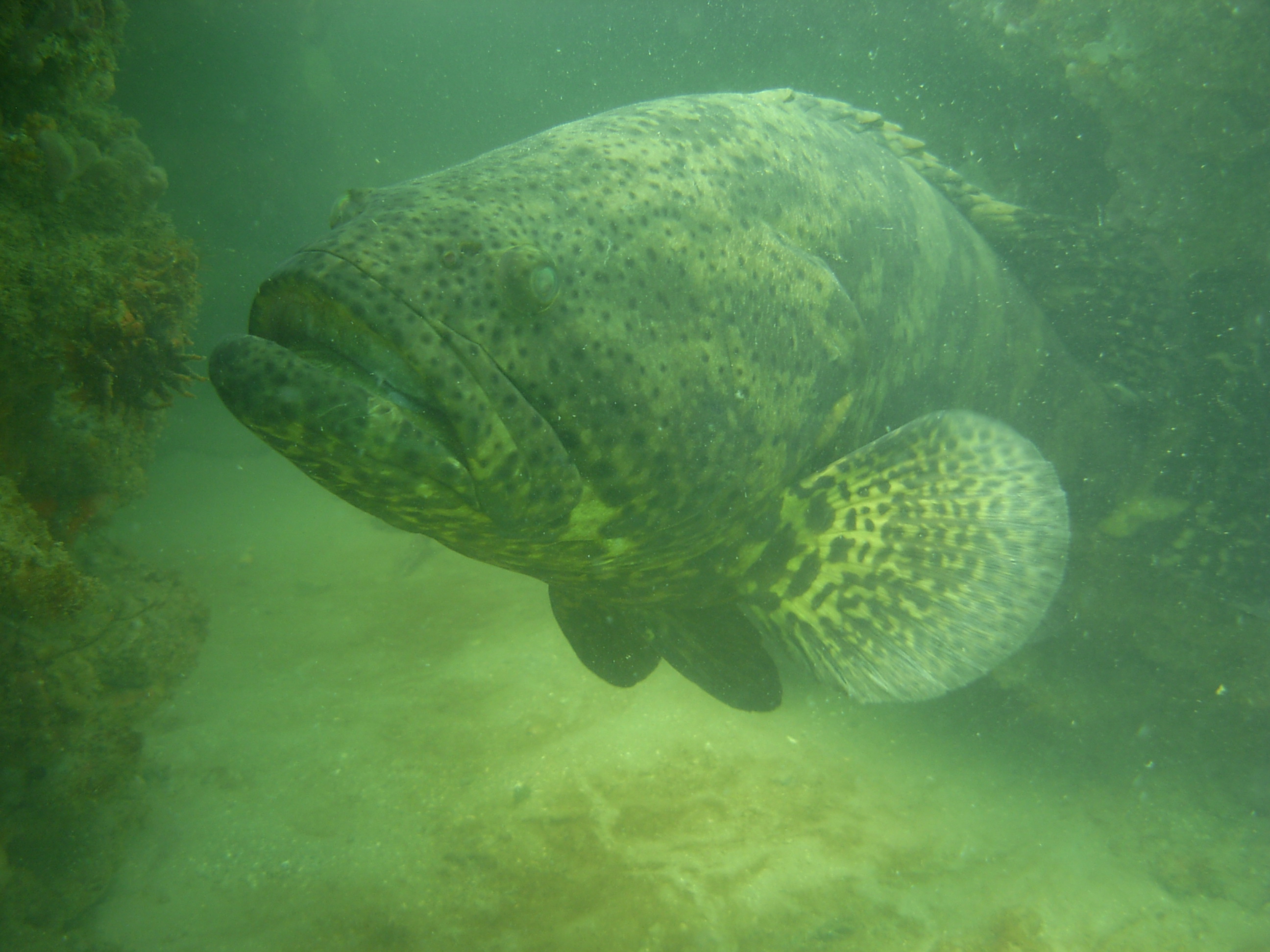
by Rick O'Connor | Mar 18, 2022
When you look over the species of sea basses and groupers from the Gulf of Mexico it is a very confusing group. Hoese and Moore1 mention the connections to other families and how several species have gone through multiple taxonomic name changes over the years – its just a confusing group.
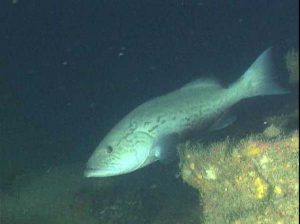
Gag grouper.
Photo: National Oceanic and Atmospheric Administration
But when you say “grouper” everyone knows what you are talking about, and everyone wants a grouper sandwich. This became a problem because what people were serving as “grouper” may not have been “grouper”. And as we just mentioned what is a grouper anyway? The families and genera have changed frequently. Well, this will probably get more technical than we want, but to sort it out – at least using the method Hoese and Moore did in 1977 – we will have to get a bit technical.
“Groupers” are in the family Serranidae. This family includes 34 species of “sea bass” type fish. Serranids differ from snappers in that they lack teeth on the vomer (roof of their mouths) and they differ from “temperate basses” (Family Percichthyidae) in that their dorsal fin is continuous, not separated into two fins. These are two fish that groupers have been confused with.
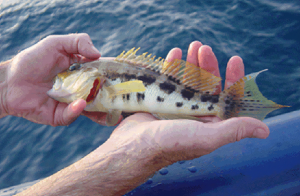
Banked Sea Bass.
Photo: National Oceanic and Atmospheric Administration.
We can subdivide the serranids into two additional groups. The “sea basses” have fewer than 10 spines in their dorsal fin. There are 10 genera and 18 species of them. They have common names like “bass”, “flags”, “barbiers”, “hamlets”, “perch”, and “tattlers”. They are small and range in size from 2 – 18 inches in length. Most are bottom reef fish with little commercial value for fishermen. Most are restricted to the tropical parts of the Atlantic basin but two are only found in the northwestern Gulf, one is only found in the eastern Gulf, and one has been found in both the Atlantic and Pacific. The biogeography of this group is very interesting. The same species found in both the Atlantic and Pacific suggest an ancient origin. The variety of serranid sea bass suggest a lot of isolation between groups and a lot of speciation.
The ”groupers” have 10 or more spines in their dorsal fin. There are two genera in this group. Those in the genus Epinephelus have 8-10 spines in their anal fin and have some canine teeth. Those in the genus Mycteroperca have 10-12 spines in their anal fin and lack canine teeth. Within these two genera there are 15 species of grouper, though the common names of “hind”, “gag”, “scamp” are also used. Most of these are found along the eastern United States and Gulf of Mexico. Five species are only found in the tropical parts of the south Atlantic region, five are also found across the Atlantic along the coast of Africa and Europe, and – like the “sea bass” two have been found in both the Atlantic and the Pacific. They range in size from six inches to seven feet in length. The Goliath Grouper can obtain weights of 700 pounds! Like the sea bass, groupers prefer structure and can live a great depths. Unlike sea bass they are heavily sought by commercial and recreational anglers and are one of the more economically important groups of fish in the Gulf of Mexico.

The massive size of a goliath grouper. Photo: Bryan Fluech Florida Sea Grant
One interesting note on this family of fish is that most are hermaphroditic. The means they have both ovaries (to produce eggs) and testes (to produce sperm). Sequential hermaphrodism is when a species is born one sex but becomes the other later in life. This is the case with most groupers, who are born female and become male later in life. However, the belted sand bass (Serranus subligarius) is a true hermaphrodite being able to produce sperm and egg at the same time – even being able to self-fertilize.
For many along the Florida panhandle, their biogeographic distribution and sex do not matter. It is a great tasting fish and very popular with anglers. For those with a little more interest in natural history of fish in our area, the biology and diversity of this group is one of the more interesting ones.
Reference
1 Hoese, H.D., Moore, R.H. 1977. Fishes of the Gulf of Mexico; Texas, Louisiana, and Adjacent Waters. Texas A&M Press. College Station TX. Pp. 327.
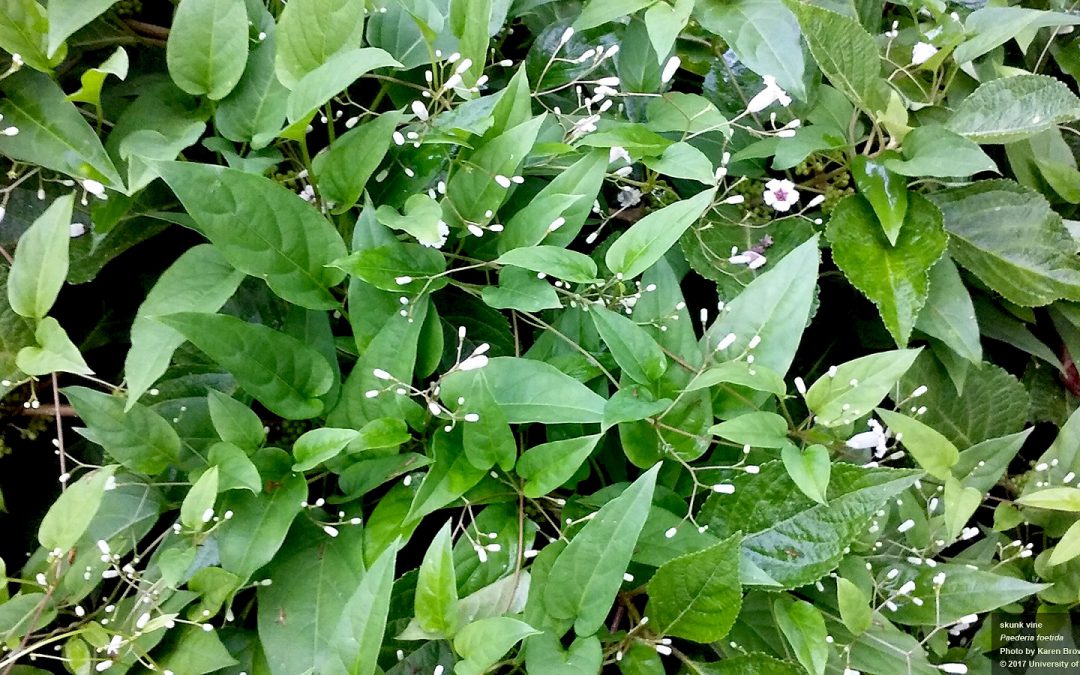
by Rick O'Connor | Mar 18, 2022
EDRR Invasive Species
Skunk Vine (Paederia foetida)

Skunk Vine
Photo: University of Florida
Define Invasive Species: must have ALL of the following –
- Is non-native to the area, in our case northwest Florida
- Introduced by humans, whether intentional or accidental
- Causing either an environmental or economic problem, possibly both
Define EDRR Species: Early Detection Rapid Response. These are species that are either –
- Not currently in the area, in our case the Six Rivers CISMA, but a potential threat
- In the area but in small numbers and could be eradicated
Native Range:
Eastern and southern Asia.
Introduction:
Around 1897 Skunk vine was introduced into Hernando County Florida as a possible fiber crop. It escaped cultivation and began to spread across central and north Florida.
EDDMapS currently list 1,252 records of skunk vine in the United States. Most are in central Florida but there are records in south and north Florida, as well as Louisiana, Texas, Georgia, South and North Carolina.
There 17 records in the Florida panhandle and 1 within the Six Rivers CISMA, that being in Santa Rosa County in the Blackwater State Forest.
Description:
This is a woody vine that can grow up to 30 feet. The vines are known to climb into the trees or grow along the ground. When crushed, the plant emits a foul odor, hence its name, and can be used to positively identify it. The leaves vary in shape but usually are heart shaped at the base, pointed at the tips, and have smooth margins. The flowers are small, light grayish pink in color, with red centers. The fruits are small and shiny brown. It can spread vegetatively or by seed.
Issues and Impacts:
This plant can survive in a variety of habitats including dense hardwood forest, pine forest, sandhills, floodplain forest, and marshes. Like kudzu and other vines, this plant will overgrow native plants on the ground and over trees. It can fill a tree canopy causing the collapse of it. It is a Category I invasive plant and a state noxious weed.
Management:
Care must be taken when trying to remove this plant. Stem fragments and seeds are easily lost when moving and can generate new plants. Extensive flooding may kill the plant, but it is known to live submerged for up to 190 days.
Skunk vine tends to invade open-disturbed areas within the forest. Mowing and tilling can help but are impractical in many cases. Studies on biological controlling insects are ongoing and show much promise.
Chemical control seems to be the most effective method at the moment, but single applications rarely complete the job. Triclopyr, with a surfactant, as a foliar spray has been effective. Glyphosate has also been effective. Care must be taken not to overspray onto other plants. Vines growing in trees should be pulled down and then sprayed to allow the herbicide to be pulled into the root system. The best time of year to do this is spring and summer.
Please report any sighting to www.EDDMapS.org. There are biologists who verify the photograph you send. It is important that we keep track of this EDRR species.
For more information on this EDRR species, contact your local extension office.
References
Paederia foetida. Skunk Vine. University of Florida Center for Aquatic and Invasive Plants. https://plants.ifas.ufl.edu/plant-directory/paederia-foetida/.
Early Detection and Distribution Mapping System (EDDMapS)
https://www.eddmaps.org/
Six Rivers CISMA
https://www.floridainvasives.org/sixrivers/

by Rick O'Connor | Mar 18, 2022
It is that time of year. The time of year when many head to their favorite nurseries to do their spring landscaping and gardening. Many of the plants sold at these locations are actually grown in more southern climates, where there are numerous invasive species of all sorts. Many of these invasive species have not made their way to the Florida panhandle but can hitchhiker on these plants when they are shipped up this way. Care should be taken when purchasing to make sure you are not bringing anything home other than the plant you want.

Nurseries provide native and nonnative plants.
The best management tool for invasive species is prevention. Across the country, particularly out west, there are survey stations at public lakes and reservoirs where state officials inspect boats and trailers when they arrive and when they leave the lake. There are hiking boot brushes at the entrance and exists to trails and active machine cleaning efforts after working in the field. Here in Florida, we do not pay as close attention to this. Machinery, boats, and plants are moved with little or no inspection. On any shipped plant could be an insect, slug, lizard, or frog that could eventually cause trouble for us. We are sure this is how the brown anole was introduced and we now getting reports of Cuban treefrogs in the panhandle.
Potential threats as EDRR species to our area include channeled apple snails, Cuban treefrogs, and greenhouse treefrog. With pond plants we need to be on the watch for several including Eurasian milfoil, water hyacinth, giant salvinia, and hydrilla. We also want to avoid purchasing and planting beach vitex, callery pear, coral ardisia, guinea grass, natalgrass, skunk vine, and swamp morning glory since they are all considered potential threats to the western panhandle.
If you have a question as whether a specific plant is invasive or not, you can visit the University of Florida’s Center for Aquatic and Invasive Plant website – https://plants.ifas.ufl.edu/.
The University of Florida IFAS Assessment website – https://assessment.ifas.ufl.edu/.
Or contact your county extension office.




















